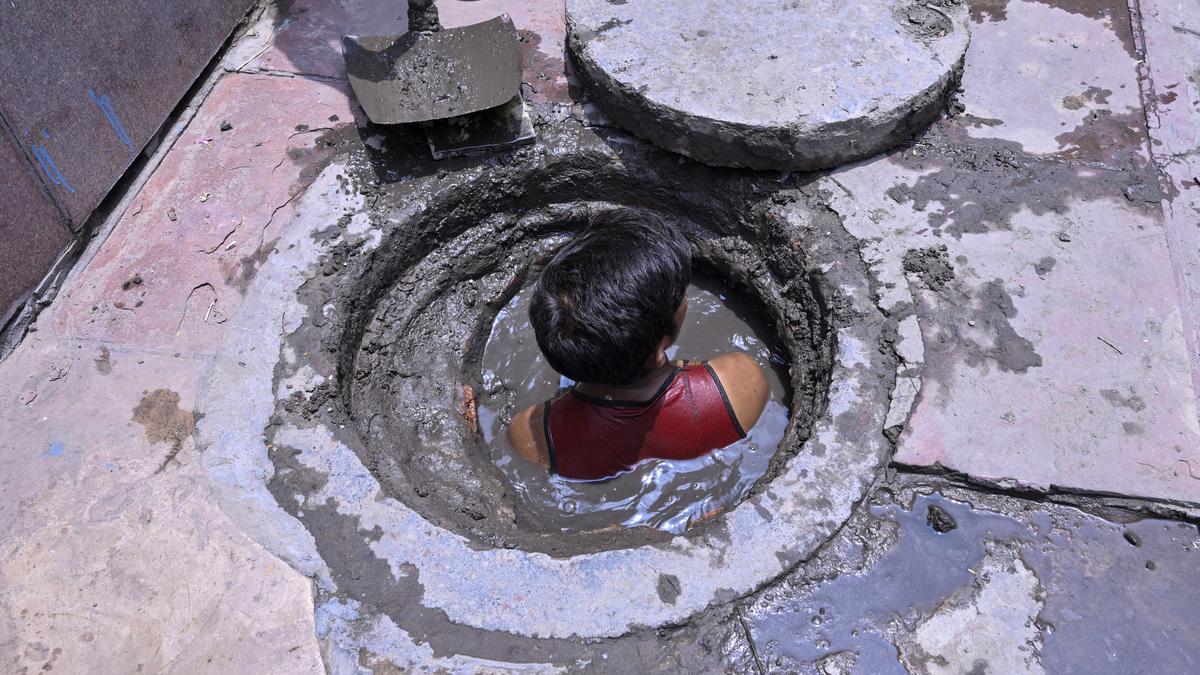Over 90% of workers who died while cleaning sewers did not have any safety gear or personalised protective equipment (PPE) kits, according to a recent social audit commissioned by the Union Government to look into hazardous sewer and septic tank cleaning across the country. Even in the cases where they had some safety gear, it was limited to a pair of gloves and gumboots.
In September 2023, the Social Justice Ministry commissioned a study into hazardous cleaning deaths, which analysed the circumstances surrounding 54 such deaths in 17 districts across eight States and Union Territories that occurred in 2022 and 2023. Government data shows 150 people across the country died due to hazardous cleaning in 2022 and 2023.
The social audit, whose findings were made public in Parliament on Tuesday (July 22, 2025), investigated hiring mechanisms, the use of safety equipment, institutional set-ups, availability of PPE kits, rapid response readiness and equipment, and awareness of the law banning manual scavenging.

No equipment or training
In 49 out of the 54 deaths examined, the workers were not wearing any safety equipment. In five cases, they were wearing just gloves, and in one case, gloves and gumboots.
In 47 instances, “no mechanised equipment and safety gears for cleaning of sewers and septic tanks were made available to the workers”, the audit report said. In fact, it was able to identify just two instances where this equipment was made available and only one where the requisite training was provided. The audit noted that in 45 of these deaths, “it was found that there is still no equipment readiness on the part of the concerned Agency carrying out such work”.
Awareness drives in the wake of the deaths were only conducted in seven cases, and were only “partially” completed. Such drives were conducted in Chennai and Kancheepuram in Tamil Nadu, and Satara district in Maharashtra.

No informed consent
No consent was taken from workers in 27 cases, according to the social audit, which further noted that even in the 18 cases where written consent was taken from the workers, “they were not counselled on the risks involved in the work”.
The study found that in 38 cases, the workers were “contracted personally/individually”. In five cases, the workers were employed by a government agency, and in three cases, they were employed by the public sector but were hired by private employers for the particular work they were doing when they died.
These findings became public when the Social Justice Ministry was replying to a question in the Lok Sabha by Congress MP Praniti Sushilkumar Shinde. In its response, the Ministry added that it has already launched the NAMASTE scheme for addressing the problem of hazardous cleaning of sewers and septic tank workers and waste-pickers in July 2023.
Scheme to provide PPE kits
This is in line with the government’s declaration that manual scavenging has ended in the country, and that it is the problem of hazardous cleaning of sewers and septic tanks that now needs attention.
So far, the NAMASTE scheme has identified 84,902 sewer and septic tank workers in 36 States and UTs across the country, of which a little over half have been provided with PPE kits and safety gear. Only in Odisha, all 1,295 such workers identified under the scheme have been given PPE kits and safety gear, thanks to the State government’s Garima scheme, according to Social Justice Minister Virendra Kumar’s response to another question in the House.
As per this statement, capital subsidies worth over ₹20 crore have been provided under the NAMASTE scheme to 707 sanitation workers, while about 1,000 workshops have been held in the country on the prevention of hazardous cleaning. Under this scheme, the government has also identified around 37,800 waste pickers.
Published – July 22, 2025 10:16 pm IST



